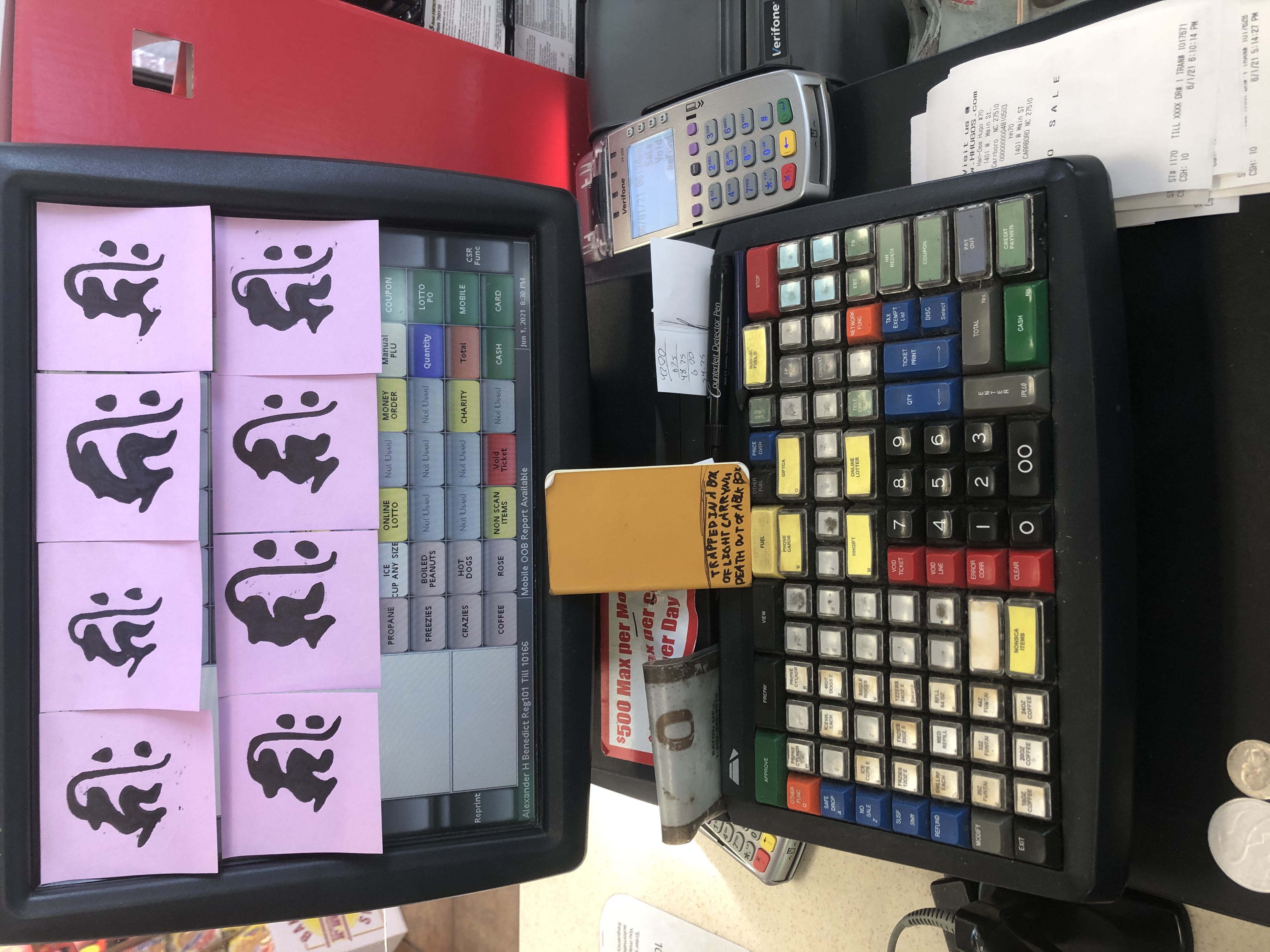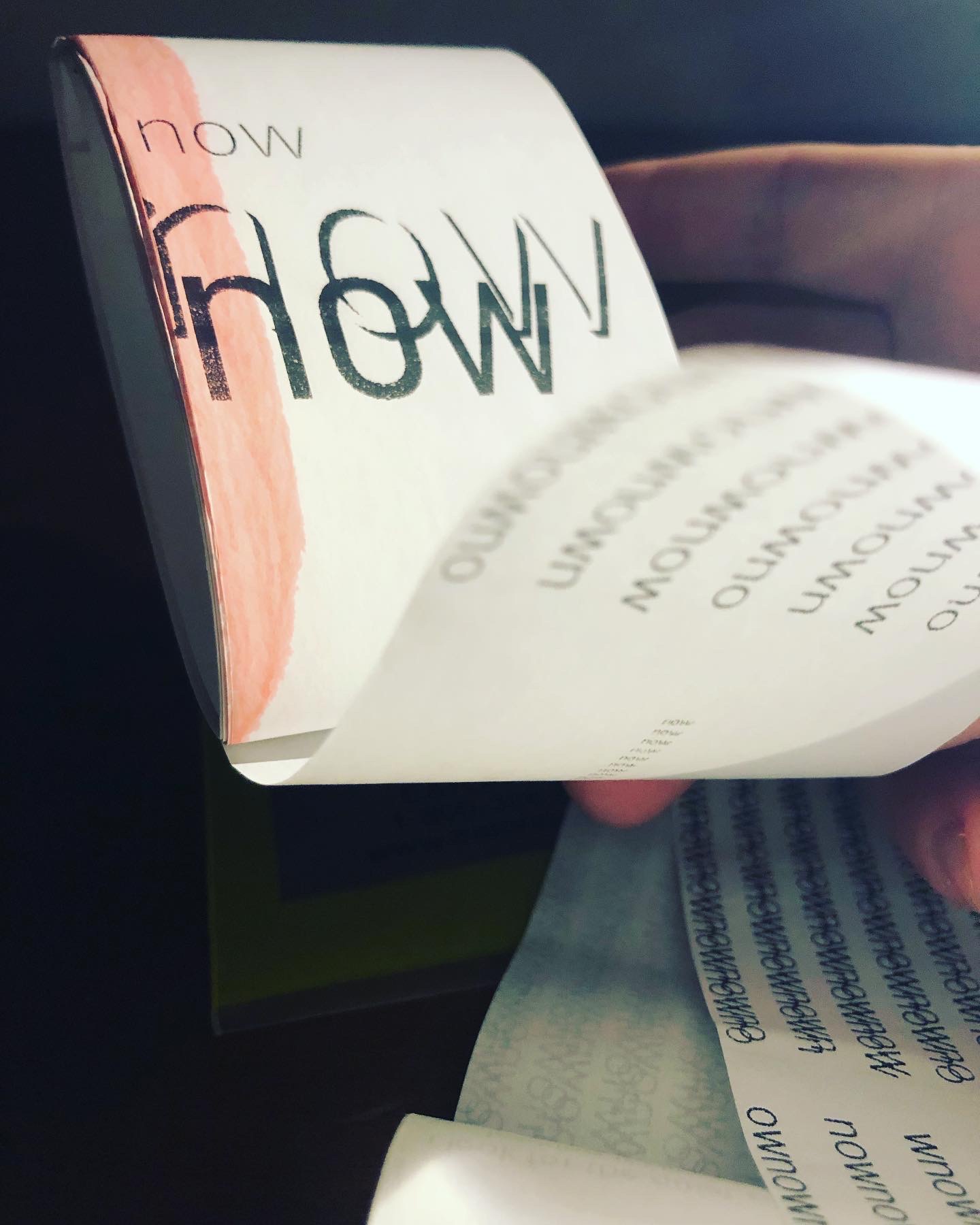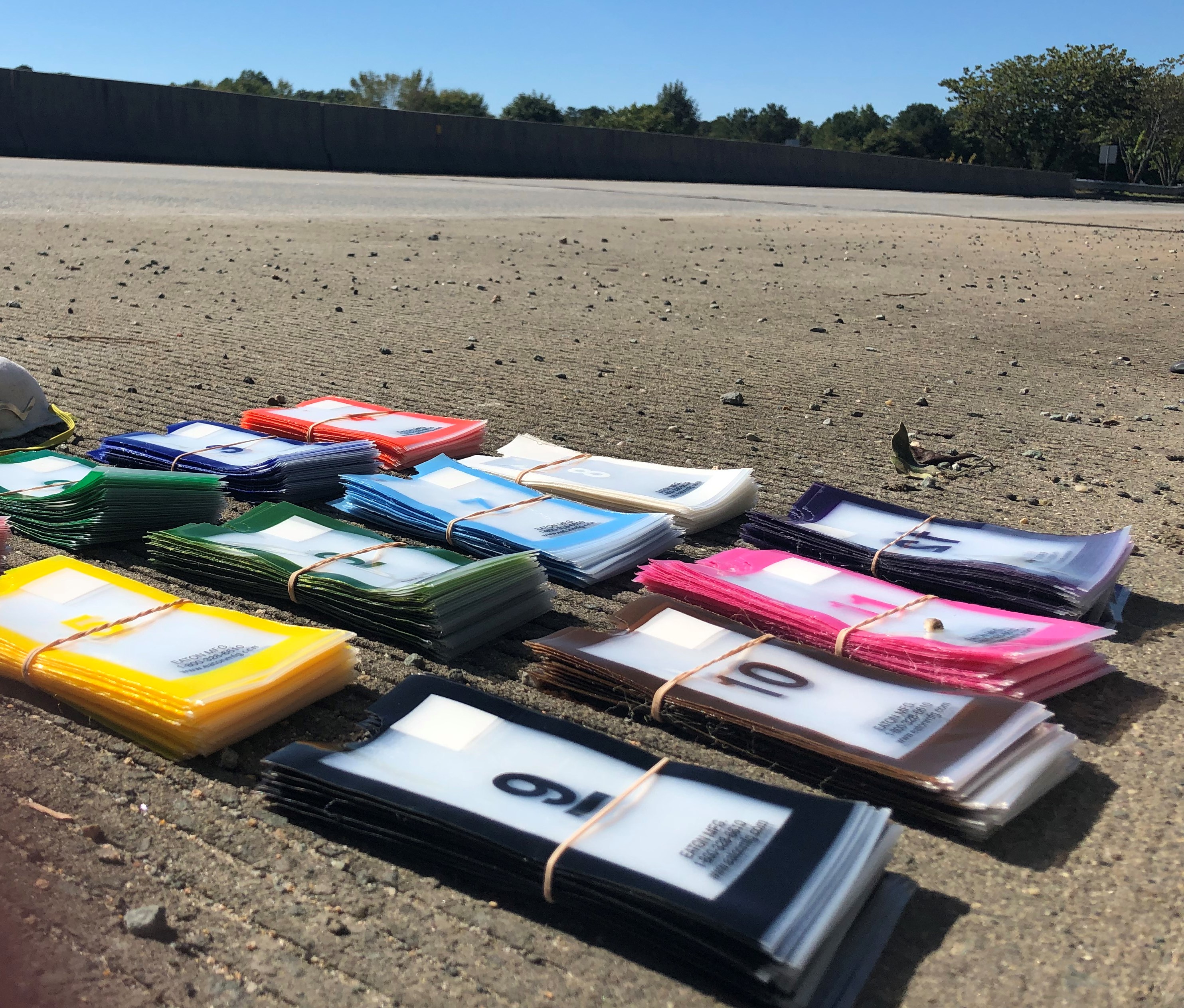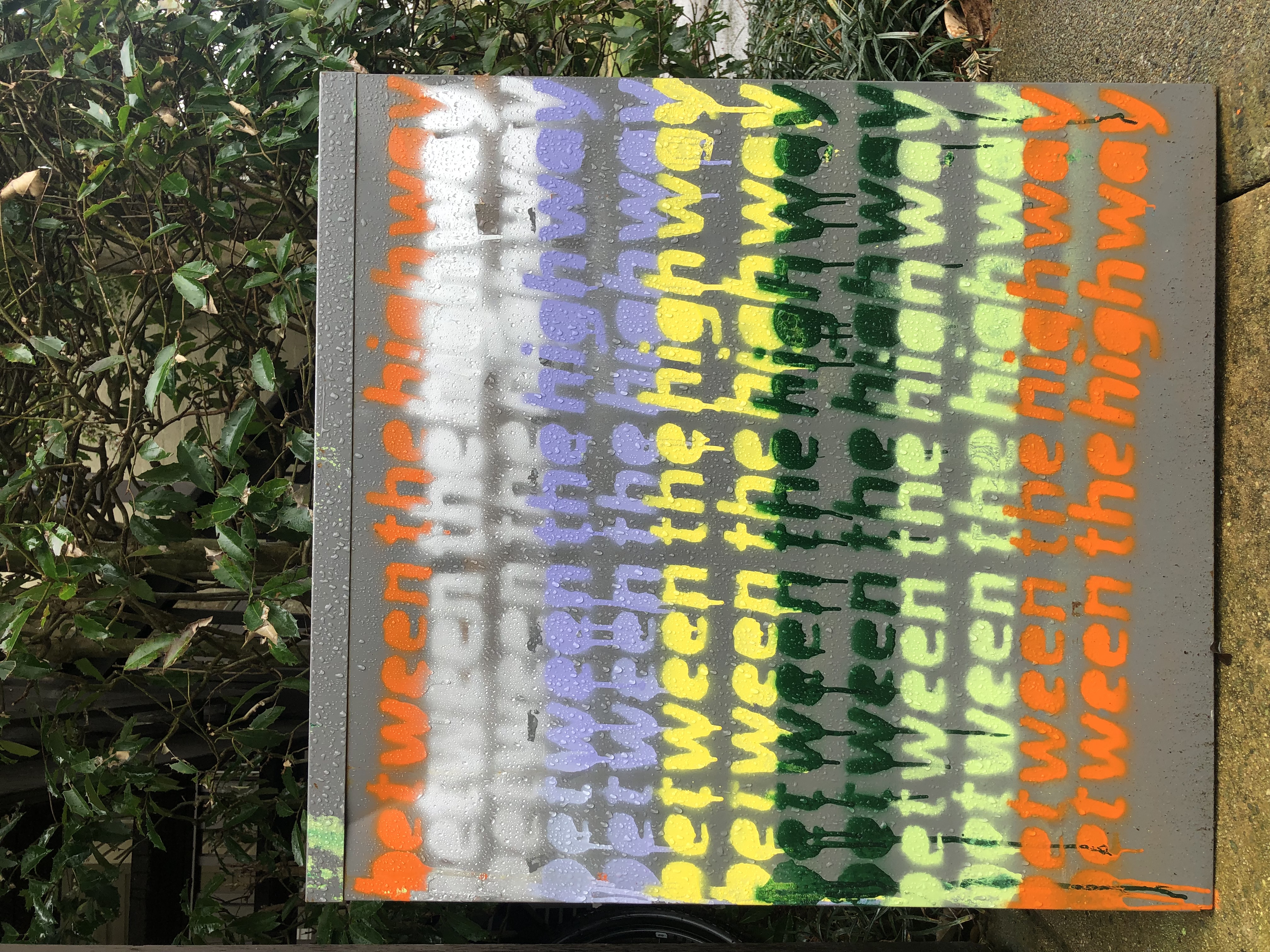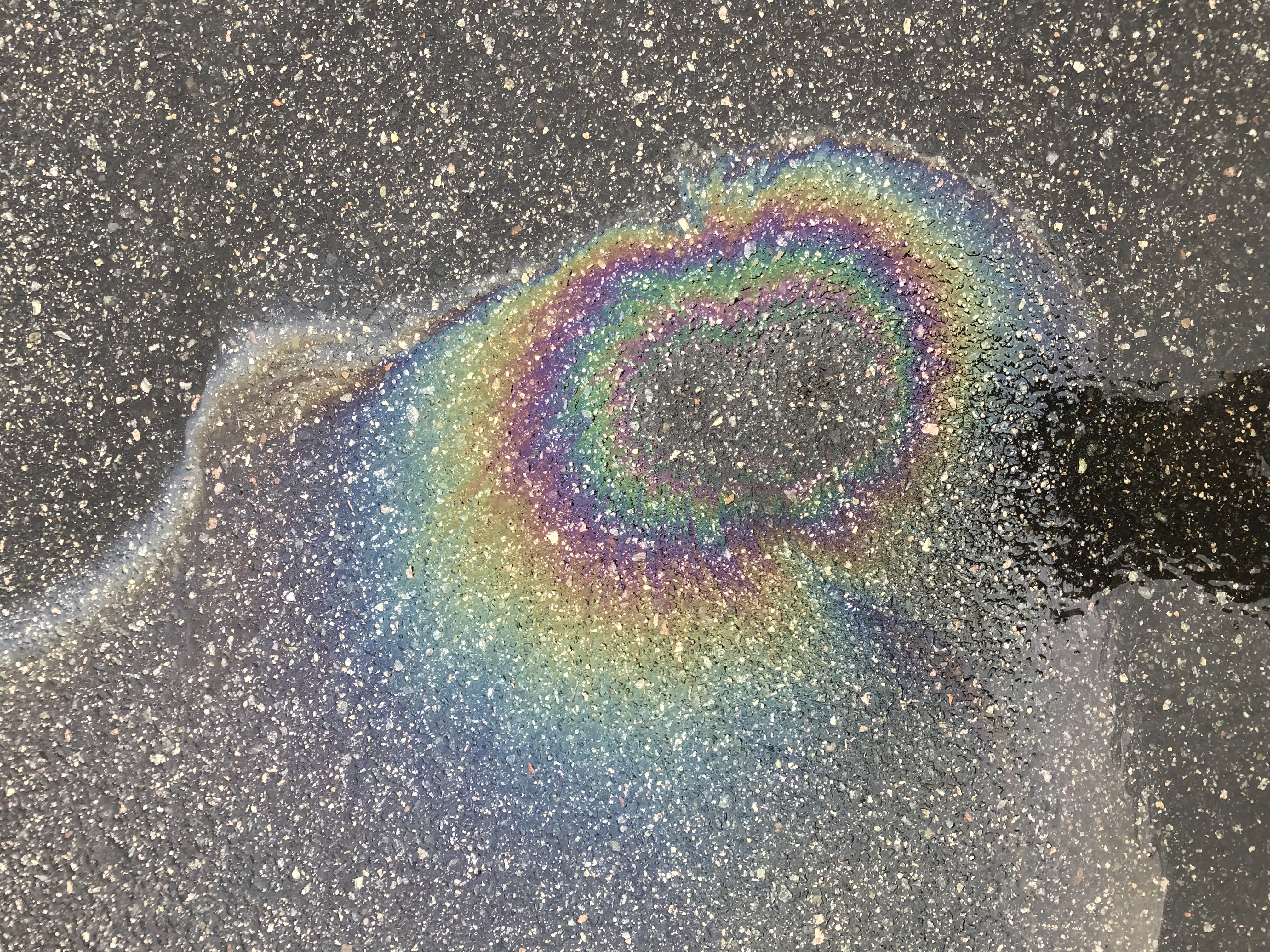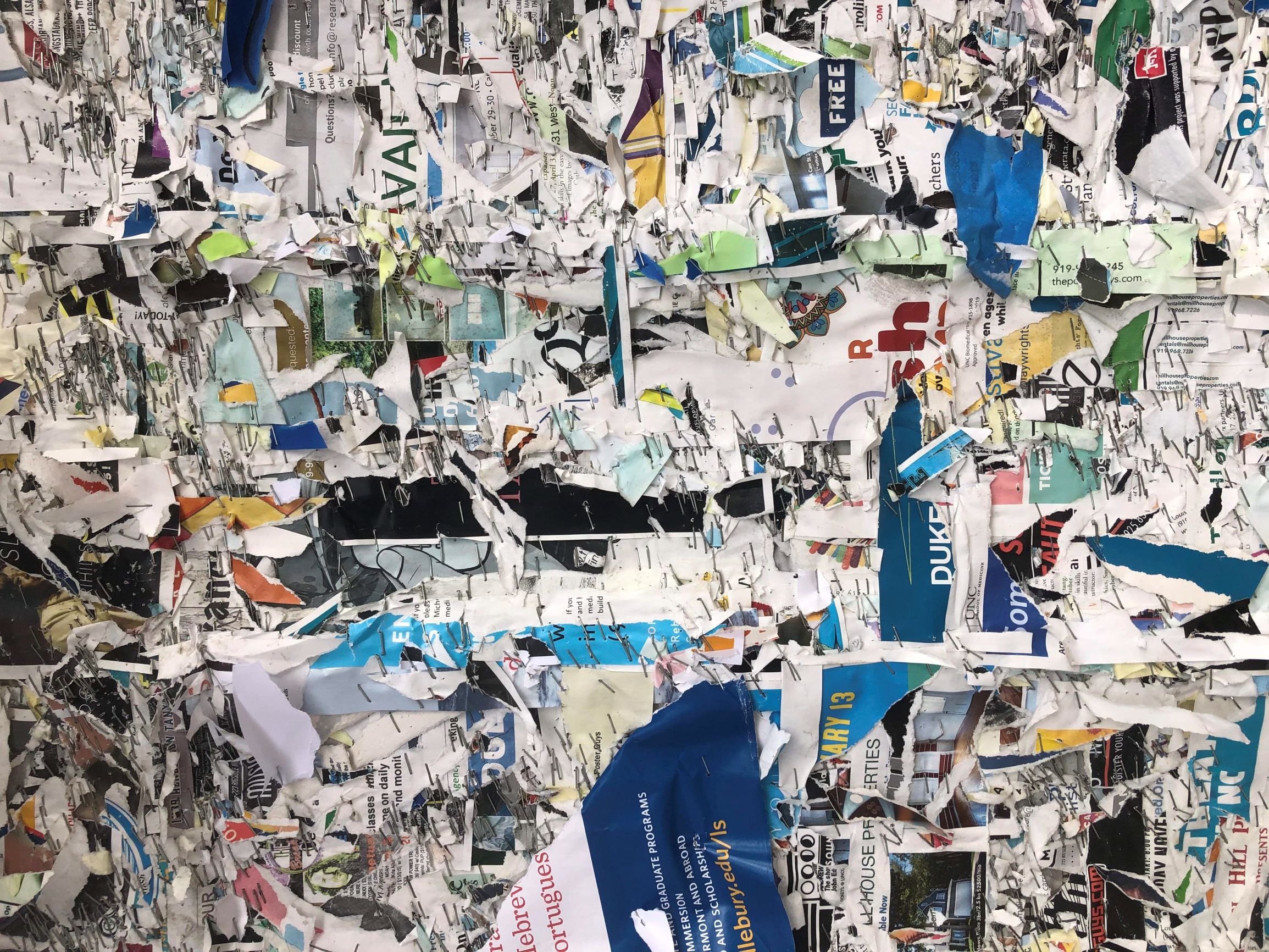
Madison Krob
From
This is how it will always start: We leave something behind.
Apparently, you can see the Gelatin bunny
from space. A group of artists from Vienna
decided to knit a 200-foot-long pink plush
bunny on the Colletto Fava mountain in 2005.
Created in the empty acres of Italian farmland,
it’s fallen from heaven, neon pink fur breaking
apart at the side seam, crocheted pastel innards
spilling stuffing onto a verdant mountain in
the middle of the countryside. It’s splayed out,
eyes to the sky, with a 5-foot crater in the divot
where the mouth should be. If you plan on
hiking up the Colletto Fava, you might stumble
across the Gelitin bunny and climb atop it,
jump into the memory foam mouth, stumble
over knitted guts of the discarded art piece.
The intent is for it to decay into the Earth over
time. The intent is for it to seem out of place
and unusual. The intent is for it to intrude, just
like art. The intent is for it to continue seeping
into the ground occupied by farmers and potters
and families residing in the Piedmont region.
My father went to school to be an artist. He
grew up in the middle of Bridgeport, Ohio,
a dying coal town where the only way out was
a draft. In the time he wasn’t catching for the
varsity team or carrying the basketball record
or spending time under the football Friday
night lights, he was drawing, envisioning the
ways of the outside. Now, our basement is
littered with my dad’s cardboard obituary of
sports memorabilia, trophies, newspaper
clippings, and letters from his time as
all-Eastern Ohio, all-valley, all-OVAC, first
team all-district and first team all-state: his
glory days. That, and a protested pile of cobweb
canvases and sketches. The shelf-life of a
zoomed in realism piece of a baseball player,
a captured examination in color of a Marshall
football game, other artistic representations of
moments in sports seems to be forever. They
sit discreet in the crawlspace in our basement
next to Christmas decorations and Halloween
costume memories and the things we keep just
to keep.
The Gelitin bunny rots and oozes a sticky
brown liquid. After nearly 15 years, the bunny
has begun emitting a horrible decaying stench.
A fair amount of small local animals have made
their homes inside between the fluff and fur.
The bunny becomes a birthing ground for the
native plants and bugs and animals. Its pregnant
belly starts to grey and melt beneath rain,
further exposing the yellowed, vegetated inside.
Still, a few hikers and locals and people with
thousand-dollar cameras return to the bunny to
capture its eventual decay, take a few fleeting
images of the stuffed waste before it disappears,
acrid into the Earth. Mr. Janka, a member of
the art collective, tells The New York Times,
“You climb upon the rabbit and feel like a
maggot in its flesh, and then you are so happily
transforming into a fly, and floating away.” I
wonder if the astronauts floating empty in
space see the rot, or if it's just a giant, happy
blush bunny doll sleeping across the dipping
hills and valleys of tanning, rural terrain.
After a full-ride scholarship to Ohio State
University to play baseball fell through in the
Spring of 1989, my dad ended up transferring
to West Liberty University to take up a catching
position with their team. He enters as a Visual
Arts major, hoping to balance a baseball schedule
with 3-hour art studio classes. In the fall of his
freshman year, he breaks his right wrist diving
back to 1st base during a game in Kentucky.
Unable to move his hand for a few months, he
switches his major to business. He says he doesn’t
draw for months, spends his time going to
physical therapy to make up movement. After
recovering, in his junior year, the West Liberty
University baseball team ends up going to the
NAIA World Championships after winning
several conference titles. My dad graduates with
a BS in business management, only a few spare
still-life’s from his first semester behind. He tells
me he hated statistics, but luckily, his professor
based his letter grade on his batting average.
The bunny becomes mayor of Bridgeport. The
bunny believes in personal development and
going to therapy. The bunny establishes
communal art programs. The bunny defunds,
and shortly after, abolishes the police. The sticky
fabric of the bunny seeps into coal country and
makes things better. The bunny calls your
grandmother every week, just to check in. The
bunny goes to little league baseball games and
puts money in the tithing bucket. The bunny
believes in fostering love and creating things
for the future generation. The bunny believes
in letting things go. The bunny passes a tax
levy building a national metro system from
New York to San Francisco. The bunny holds
your hand, the intimate kind, with fingers
intertwined and sticky sweat. The bunny
reopens the local library that got turned into
a Pizza Hut. The bunny tints the acid Earth of
Ohio fracking land bright pink. I keep the bunny
close in ways rural life won’t. The bunny is art
for the sake of art. There’s only an outline left,
follies of forever.
After graduating, my dad tries out for a few
MLB teams. He heads to a drafting event for
the Mets. He gets through to the final round.
He gets cut during Spring training. They say
he’s too slow, even for a catcher. He gives up
on baseball dreams. He ends up moving back
to Ohio and taking a job with Verizon to run
their corporate accounts. He only draws when
he puts up dozens of “Happy Birthday” posters
with certified dad puns (it’s keen to be seventeen!)
around the house for his children’s birthdays.
He gets inducted into the Bridgeport Hall of
Fame for sports. His daughter introduces him
during the inauguration. She talks about his art.
She talks about passions and having them tucked
under the worry of small-town success. She talks
about everything he’s ever taught her about
following your dreams. Her father lets a pencil
drawing of a wrestling match rot in the Earth.
This is how it will always start: We leave something behind.
Apparently, you can see the Gelatin bunny
from space. A group of artists from Vienna
decided to knit a 200-foot-long pink plush
bunny on the Colletto Fava mountain in 2005.
Created in the empty acres of Italian farmland,
it’s fallen from heaven, neon pink fur breaking
apart at the side seam, crocheted pastel innards
spilling stuffing onto a verdant mountain in
the middle of the countryside. It’s splayed out,
eyes to the sky, with a 5-foot crater in the divot
where the mouth should be. If you plan on
hiking up the Colletto Fava, you might stumble
across the Gelitin bunny and climb atop it,
jump into the memory foam mouth, stumble
over knitted guts of the discarded art piece.
The intent is for it to decay into the Earth over
time. The intent is for it to seem out of place
and unusual. The intent is for it to intrude, just
like art. The intent is for it to continue seeping
into the ground occupied by farmers and potters
and families residing in the Piedmont region.
My father went to school to be an artist. He
grew up in the middle of Bridgeport, Ohio,
a dying coal town where the only way out was
a draft. In the time he wasn’t catching for the
varsity team or carrying the basketball record
or spending time under the football Friday
night lights, he was drawing, envisioning the
ways of the outside. Now, our basement is
littered with my dad’s cardboard obituary of
sports memorabilia, trophies, newspaper
clippings, and letters from his time as
all-Eastern Ohio, all-valley, all-OVAC, first
team all-district and first team all-state: his
glory days. That, and a protested pile of cobweb
canvases and sketches. The shelf-life of a
zoomed in realism piece of a baseball player,
a captured examination in color of a Marshall
football game, other artistic representations of
moments in sports seems to be forever. They
sit discreet in the crawlspace in our basement
next to Christmas decorations and Halloween
costume memories and the things we keep just
to keep.
The Gelitin bunny rots and oozes a sticky
brown liquid. After nearly 15 years, the bunny
has begun emitting a horrible decaying stench.
A fair amount of small local animals have made
their homes inside between the fluff and fur.
The bunny becomes a birthing ground for the
native plants and bugs and animals. Its pregnant
belly starts to grey and melt beneath rain,
further exposing the yellowed, vegetated inside.
Still, a few hikers and locals and people with
thousand-dollar cameras return to the bunny to
capture its eventual decay, take a few fleeting
images of the stuffed waste before it disappears,
acrid into the Earth. Mr. Janka, a member of
the art collective, tells The New York Times,
“You climb upon the rabbit and feel like a
maggot in its flesh, and then you are so happily
transforming into a fly, and floating away.” I
wonder if the astronauts floating empty in
space see the rot, or if it's just a giant, happy
blush bunny doll sleeping across the dipping
hills and valleys of tanning, rural terrain.
After a full-ride scholarship to Ohio State
University to play baseball fell through in the
Spring of 1989, my dad ended up transferring
to West Liberty University to take up a catching
position with their team. He enters as a Visual
Arts major, hoping to balance a baseball schedule
with 3-hour art studio classes. In the fall of his
freshman year, he breaks his right wrist diving
back to 1st base during a game in Kentucky.
Unable to move his hand for a few months, he
switches his major to business. He says he doesn’t
draw for months, spends his time going to
physical therapy to make up movement. After
recovering, in his junior year, the West Liberty
University baseball team ends up going to the
NAIA World Championships after winning
several conference titles. My dad graduates with
a BS in business management, only a few spare
still-life’s from his first semester behind. He tells
me he hated statistics, but luckily, his professor
based his letter grade on his batting average.
The bunny becomes mayor of Bridgeport. The
bunny believes in personal development and
going to therapy. The bunny establishes
communal art programs. The bunny defunds,
and shortly after, abolishes the police. The sticky
fabric of the bunny seeps into coal country and
makes things better. The bunny calls your
grandmother every week, just to check in. The
bunny goes to little league baseball games and
puts money in the tithing bucket. The bunny
believes in fostering love and creating things
for the future generation. The bunny believes
in letting things go. The bunny passes a tax
levy building a national metro system from
New York to San Francisco. The bunny holds
your hand, the intimate kind, with fingers
intertwined and sticky sweat. The bunny
reopens the local library that got turned into
a Pizza Hut. The bunny tints the acid Earth of
Ohio fracking land bright pink. I keep the bunny
close in ways rural life won’t. The bunny is art
for the sake of art. There’s only an outline left,
follies of forever.
After graduating, my dad tries out for a few
MLB teams. He heads to a drafting event for
the Mets. He gets through to the final round.
He gets cut during Spring training. They say
he’s too slow, even for a catcher. He gives up
on baseball dreams. He ends up moving back
to Ohio and taking a job with Verizon to run
their corporate accounts. He only draws when
he puts up dozens of “Happy Birthday” posters
with certified dad puns (it’s keen to be seventeen!)
around the house for his children’s birthdays.
He gets inducted into the Bridgeport Hall of
Fame for sports. His daughter introduces him
during the inauguration. She talks about his art.
She talks about passions and having them tucked
under the worry of small-town success. She talks
about everything he’s ever taught her about
following your dreams. Her father lets a pencil
drawing of a wrestling match rot in the Earth.
